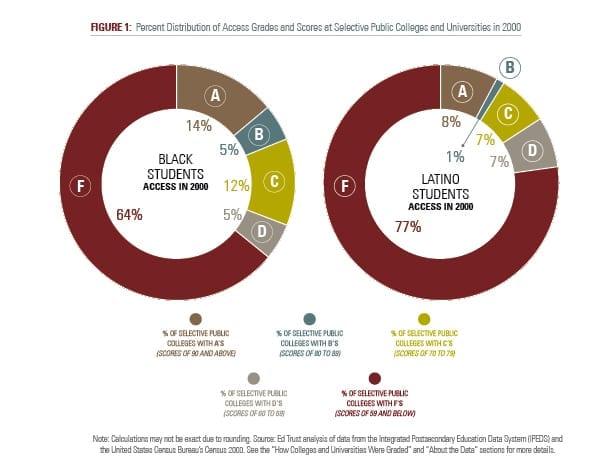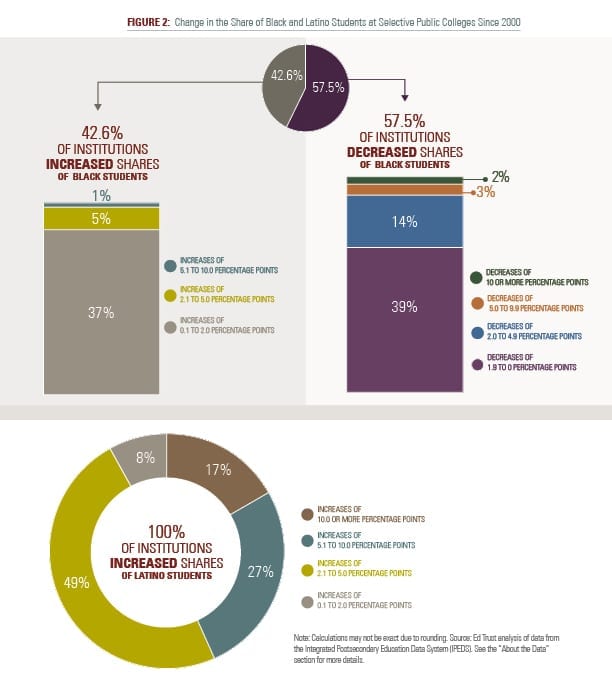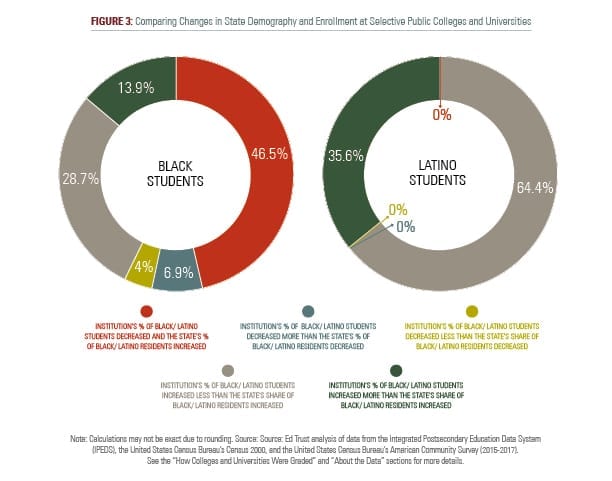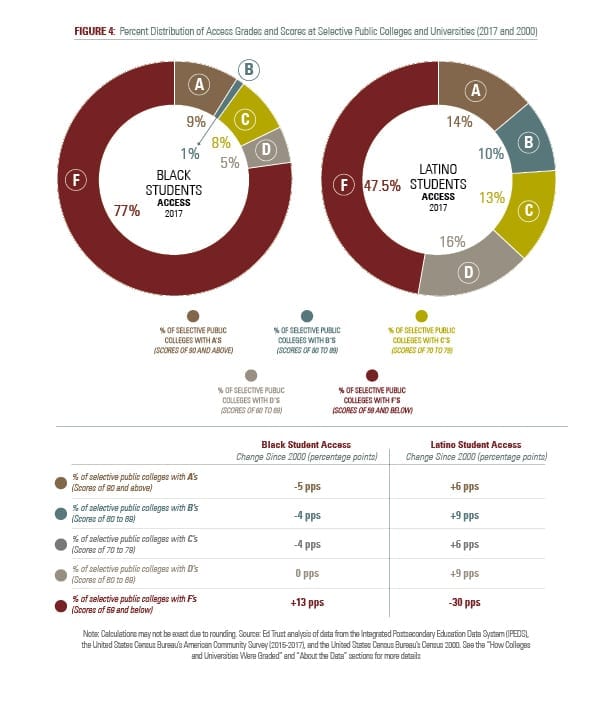Segregation Forever?
While the COVID-19 pandemic and the police killings of Breonna Taylor, George Floyd, and Rayshard Brooks have shined a…
While the COVID-19 pandemic and the police killings of Breonna Taylor, George Floyd, and Rayshard Brooks have shined a bright light on systemic racism in U.S. public health and policing, there is less awareness of the many ways systemic racism limits educational opportunity for Black and Latino people in this country. This report from The Education Trust exposes the continued and systematic exclusion of Black and Latino students from the most selective public colleges and universities in the country. We challenge the nation’s top 101 public colleges to finally reflect the nation’s racial diversity.
“Segregation Forever?” The Continued Underrepresentation of Black and Latino Undergraduates at the Nation’s 101 Most Selective Public Colleges and Universities relies on federal education and U.S. Census data to show that most of these prestigious and best-funded public colleges enroll a smaller percentage of Black students today than they did 20 years ago, and while the numbers of Latino students on these campuses has increased, Latino enrollment is not keeping pace with the Latino population growth in most states.

The report takes its title from a not-so-long-ago moment in America’s history of racial injustice. Alabama Governor George Wallace proclaimed 60 years ago: “Segregation now, segregation tomorrow, segregation forever!” Wallace’s proclamation appears etched into the cornerstone of our nation’s most well-known public institutions of higher education still today.
“These last few months have shown to anybody paying attention that racism is alive and well in this country. Racism permeates higher education, too. There is no acceptable reason in 2020 for the vast majority of these 101 public colleges to systematically exclude Black students like this – and to a great extent, Latino students as well. It is time for public college presidents to take substantive anti-racist action that matches their soaring anti-racist rhetoric. It is time for public college presidents to enroll and graduate students who represent the racial diversity of their state and of this nation.”
– Andrew Howard Nichols, Senior Director for Research and Data Analytics
The report’s findings for the 101 most selective public colleges and universities in the U.S. include:


Only a few of these top-ranked colleges stood out for equitable enrollment of Black and Latino students. University of Albany topped the list for enrolling Black students in representative numbers. While 16% of New York residents are Black, 17% of University of Albany students are Black. And the institution is redoubling its commitment to racial equity at this time of national crisis.
“We’ve been systematically addressing the issues our student leaders have highlighted, in terms of the campus climate, in terms of diversity, equity, and inclusion. With the protests that have emerged, students continue to increase pressure on the institution, as they should, to hold our feet to the fire. All of us presidents have put out strong, bold statements against racism, as we should. But once the protests subside, once the media diverts their attention to the next crisis, how will we measure the progress that we’ve made? What’s going to be the sustainable, long-lasting, impactful change? That is the challenge before us. That’s what we need to focus on.”
– Havidán Rodríguez, president, University at Albany
“The exclusion of Black and Latinx students from selective colleges and universities is nothing short of a crisis. In this report, 7 out of 9 UC undergraduate campuses receive D and F grades in access for Black and Latinx students. Higher education leaders and policymakers must move beyond public commitments to diversity — and act decisively to ensure that access is truly equitable.”
– Varsha Sarveshwar, President, University of California Student Association

Improving access for Black and Latino students at the 101 colleges and universities included in this report is a matter of will. With larger endowments and more funding, these institutions have the resources to do so, but their leaders must make a conscious commitment to increasing access. Policymakers can also help institutions become more accessible.